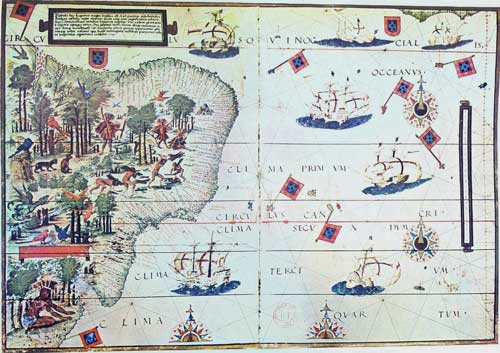It was disastrous when Europeans first arrived in what would become Brazil — 95 percent of its population, the majority of its tribes, and essentially all of its urban and agricultural infrastructure vanished. The experiences of Brazil’s indigenous societies mirror those of other indigenous peoples following “first contact.”
A new study of Brazil’s indigenous societies led by Santa Fe Institute researcher Marcus Hamilton paints a grim picture of their experiences, but also offers a glimmer of hope to those seeking ways to preserve indigenous societies.
Even among the indigenous societies contacted in just the last 50 years, says Hamilton, “all of them went through a collapse, and for the majority of them it was disastrous,” with disease and violence responsible in most cases, and with lasting detrimental effects. “That’s going on today — right now.”
Brazil is “a tragic natural experiment,” Hamilton says: several hundred native tribes contacted by outsiders remain, according to Instituto Socioambiental, a non-governmental organization that reports census data on 238 of those societies going back a half-century or more. That volume of data makes possible a detailed analysis of the health and prospects of the surviving contacted — and uncontacted — societies, an analysis that wouldn’t be possible any where else in the world.
Using a method called population viability analysis, the researchers found that contact by outsiders is typically catastrophic, yet survivable. While first contacts in Brazil led to population declines of 43 percent on average, that decline bottomed out an average of eight or nine years after contact, following which population numbers grew as much as four percent a year — about as much as possible. Projecting those results into the future suggests that contacted and as-yet uncontacted populations could recover from a low of just 100 individuals.
Hamilton and co-authors Robert Walker and Dylan Kesler of the University of Missouri describe their analysis in a paper published this week in Scientific Reports.
While their analysis paints a hopeful picture, Hamilton notes that deforestation, the breakdown of interactions between tribes, and assimilation with the outside world pose ongoing threats to indigenous societies.
“Demographically they’re healthy,” Hamilton says, but as for their long-term survival, “it’s very up in the air.”
If our reporting has informed or inspired you, please consider making a donation. Every contribution, no matter the size, empowers us to continue delivering accurate, engaging, and trustworthy science and medical news. Independent journalism requires time, effort, and resources—your support ensures we can keep uncovering the stories that matter most to you.
Join us in making knowledge accessible and impactful. Thank you for standing with us!

